
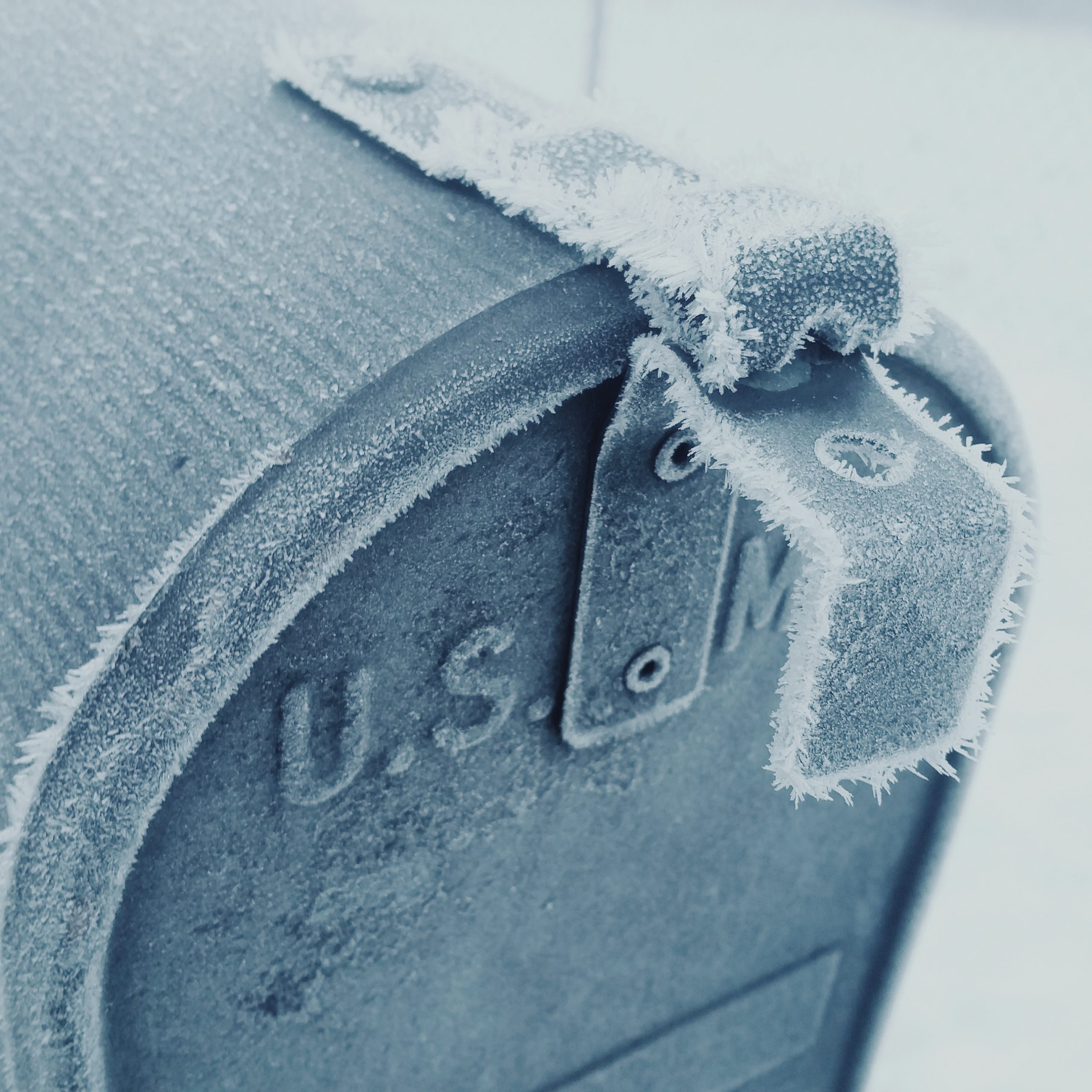
Quick Links
Quick Links
Not relevant. Didn’t subscribe. Not interested. Boring. Where did you get my email from? Spam… Spam. Spam!
How often do you think these when opening an email? Let me ask you another question, in fact, more important: how did it happen that you are not excited about what someone is trying to offer you? The answer to this question is simple: the sender is not a professional and doesn’t know how to compose great emails.
If you do not want to be one of those amateurs, continue reading. This article discloses the top elements of a winning cold email. They will help you not only compose the best cold emails, but you can also implement them when leading your future customers through the three stages of the sales funnel: awareness, consideration, and decision.
Be Sure People Want to Hear From You
Remember the definition of spam? These are unsolicited emails, the emails people don’t want and don’t expect to receive. There’s hardly anyone who is glad to get messages from the unknown. This is the reason why you need to get the person’s consent to receive emails. Otherwise, it will be easier for you to get to the spam folder.
Personalize The Emails You Send
A personal approach is what will help you win a place in the recipients’ hearts. Before reaching out to people, research and find as much information as you can. Personalization stands not only for the recipient’s name; it also includes the company the person works at, their pain points, recommendations they are eager for, relevant offers, etc.

Source: Snov.io
Segment Your Audience
Once the information about your leads and subscribers is collected, you can start working with it. The first thing you need to do is to segment your audience into smaller groups. The more groups you have, the more targeted approach you’ll be able to release. Define their distinguishing features and split them into groups. You can segment your audience depending on the leads’ location, industry, position, business type, company size, pain points, etc.
Be Professional
You should look professional within your business email. No doubt, you need to write without misspellings and mistakes. Still, you need to remember about:
- Your sender’s name. People have to know who you are. Use a recognizable sender’s name, do not change it often, combine your name and the platform or company name, for example, Clayton from FreeUp or Helen from Snov.io to look even more professional.
- The email preheader. This text is displayed right after the subject line and it doesn’t have to be plain. Keep it short (up to 55 characters), make it different from the email beginning, make it the continuation of the subject line.
- Greeting. When composing this part of an email, think twice. Think of your recipients’ position, age, and social role. There are lots of options for how you can greet people. Hi. Hello. Howdy. Dear Sir or Madam. Which one is the most appropriate for your communication? In fact, Hi or Hi there are the best options. They suit business communication and cold emails.
- The email signature goes at the end of an email (I’ll speak about the email body further on). This is the place where you can insert relevant information about you: your name and position, company and corporate website, contact details, and social networks. Keep it short (no longer than 7 lines), use your photo, use corporate colors, or insert a CTA into it.
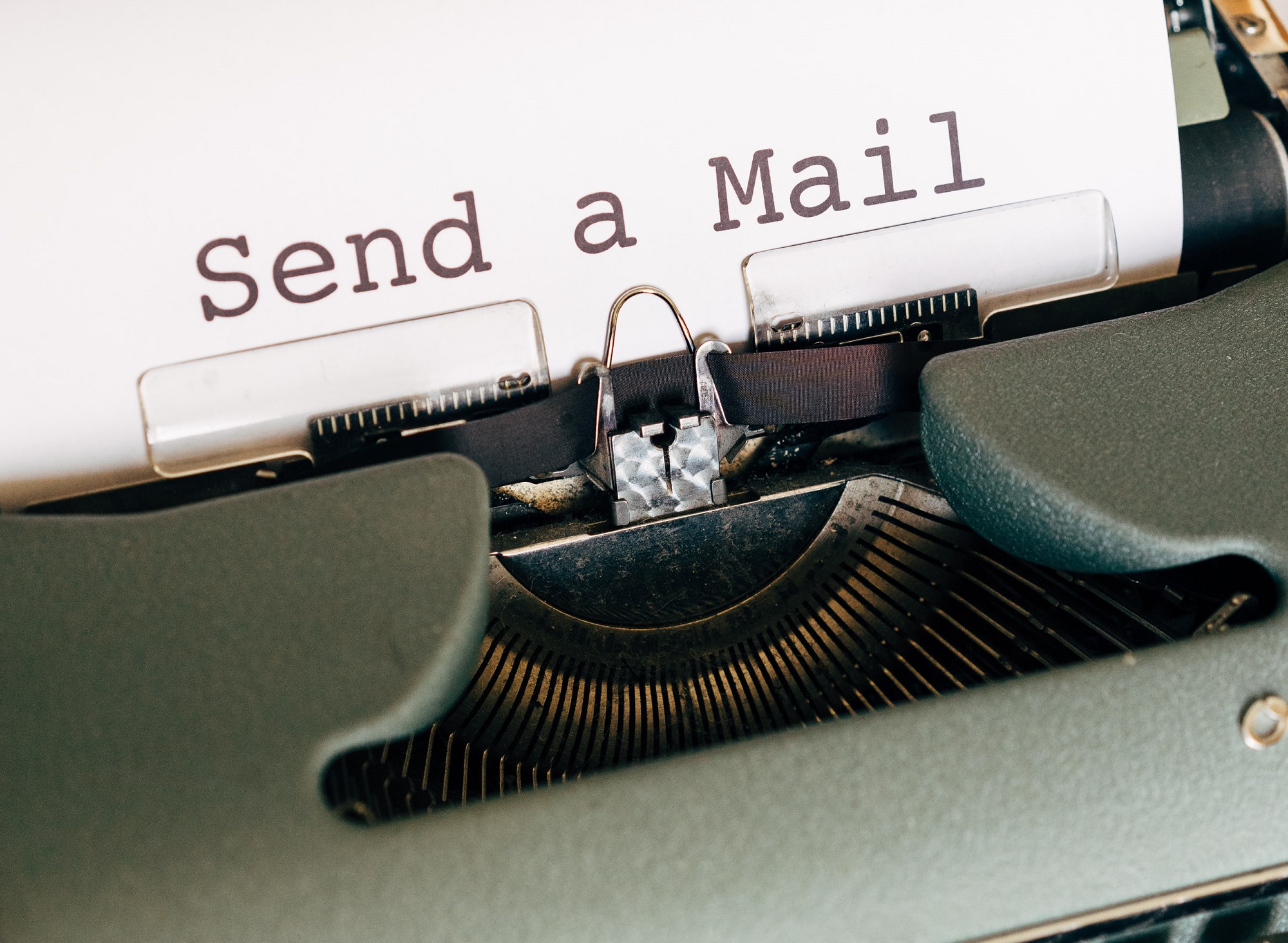
Eliminate the Fluff
People are busy. Who has time for reading a thousand-word email? A short intro, and get to the point right away. The best email length is 50-125 words; emails of 500+ words show the lowest reply rate. Still, messages of 200-250 words show the highest response rate. Avoid metaphors and ambiguous words, be clear and easy to understand.
Re-read your email at least twice: analyze it and delete the unnecessary parts. Try to aim at a one-minute-read email.
Be patient on fonts, colors, links, etc.
Spammers are passionate about bright emails: lots of colors, different fonts, many links (especially shortened), attachments, etc. You are not a spammer, so avoid these as much as possible. According to science, there should be no more than three colors in an email. If you are bad at color combinations (just as I am), use your corporate colors. They are already combined by professionals and go together.
Since the 2000s, spammers have used lots of fonts to attract attention to their emails. This tactic doesn’t work anymore. Use no more than 2 fonts and avoid lots of text formatting, today, it looks confusing and annoying.
Too many links are suspicious too. Insert only one link into an email. Best, do it in the form of a CTA. If there’s a necessity to send more links, split your email into more messages. One email, one link, one CTA.
Don’t Include Attachments
Attachments in emails have a negative impact on email deliverability. This is why it’s better for you to avoid them, especially within cold emails. Here are a few reasons why. They look suspicious to ESPs and there’s a higher chance of being sent to the spam folder. Additionally that, people do not trust attachments as they are often used for phishing and hack attacks. Attachment in a cold email can cause a high spam complaint rate. You don’t want this, do you?
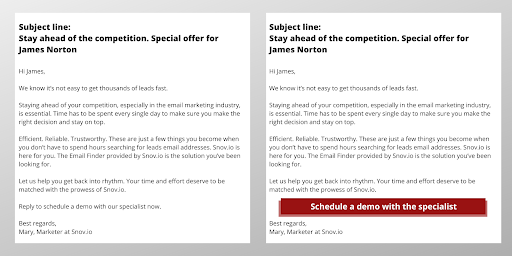
Write a Strong CTA
What is the aim of your email? Receive a reply? Schedule a demo? Purchase? Or download a freebie? Define it and make the CTA button or link the brightest spot in your message. It will attract the recipient’s attention and the conversion chance gets higher.
Moreover, the CTA is to be the only one in an email. Otherwise, it will be difficult for an email recipient to understand your message. This way, the email will have no result and the desired conversion will get lost.
Avoid Grammar and Spelling Mistakes
To avoid spam filters, spammers often use characters from other languages within one word. Secondly, they do not have much time to re-read the email text and correct mistakes, they just compose and send emails right and left.
Professionals always have time to double-check their messages.
When working with a text for a long time, you are becoming less perceptive of things. Leave a composed email for a day or two and re-read it. Believe me, you’ll find mistakes in it, and there’s always something that needs improvement. You can do it another way. Ask your colleagues to look through an email and give their feedback. No one loves misspellings.
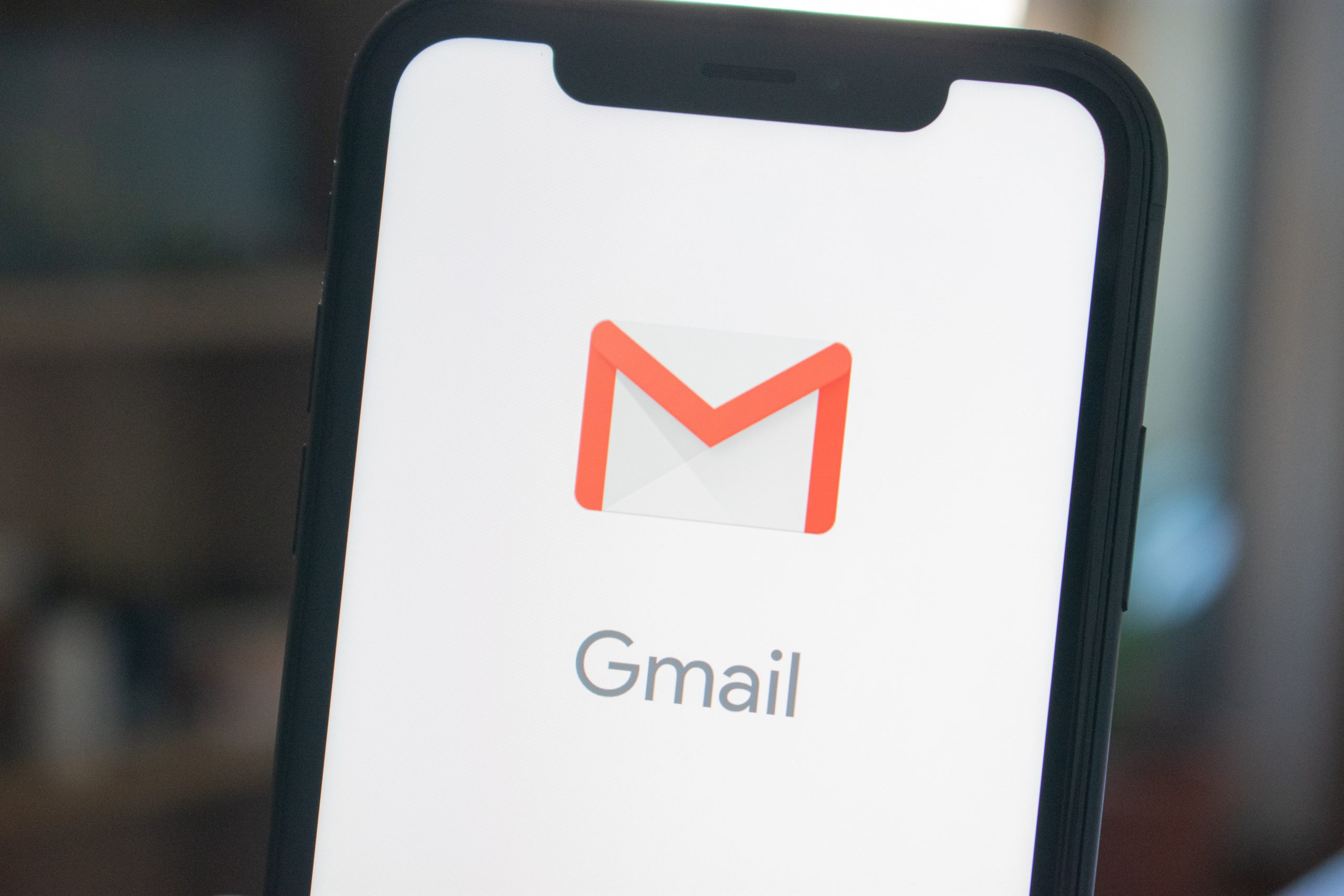
Design Mobile-Friendly Emails
Smartphones have conquered our hearts long ago. 81% of people check their email on their phones. When an email doesn’t display or it takes much time to download it, people delete it and never come back to it.
That’s not your aim; your emails are to be opened (at least). To not end in the trash folder, make your email mobile-friendly. Test your HTML-emails out or send plain-text ones: they display well on all the devices.
Schedule Your Emails
Send emails manually? Hell, no! There’s a tool for sending cold email campaigns and auto-messages. Email drip campaign tools are the best solution for those who need to send emails regularly to groups of people. You only need to build a scheduled email campaign with triggers and compose personalized emails. Then, the tool will do the rest. You can and, in fact, should create email campaigns for every segment of your audience. Targeted campaigns and a personalized approach, remember?
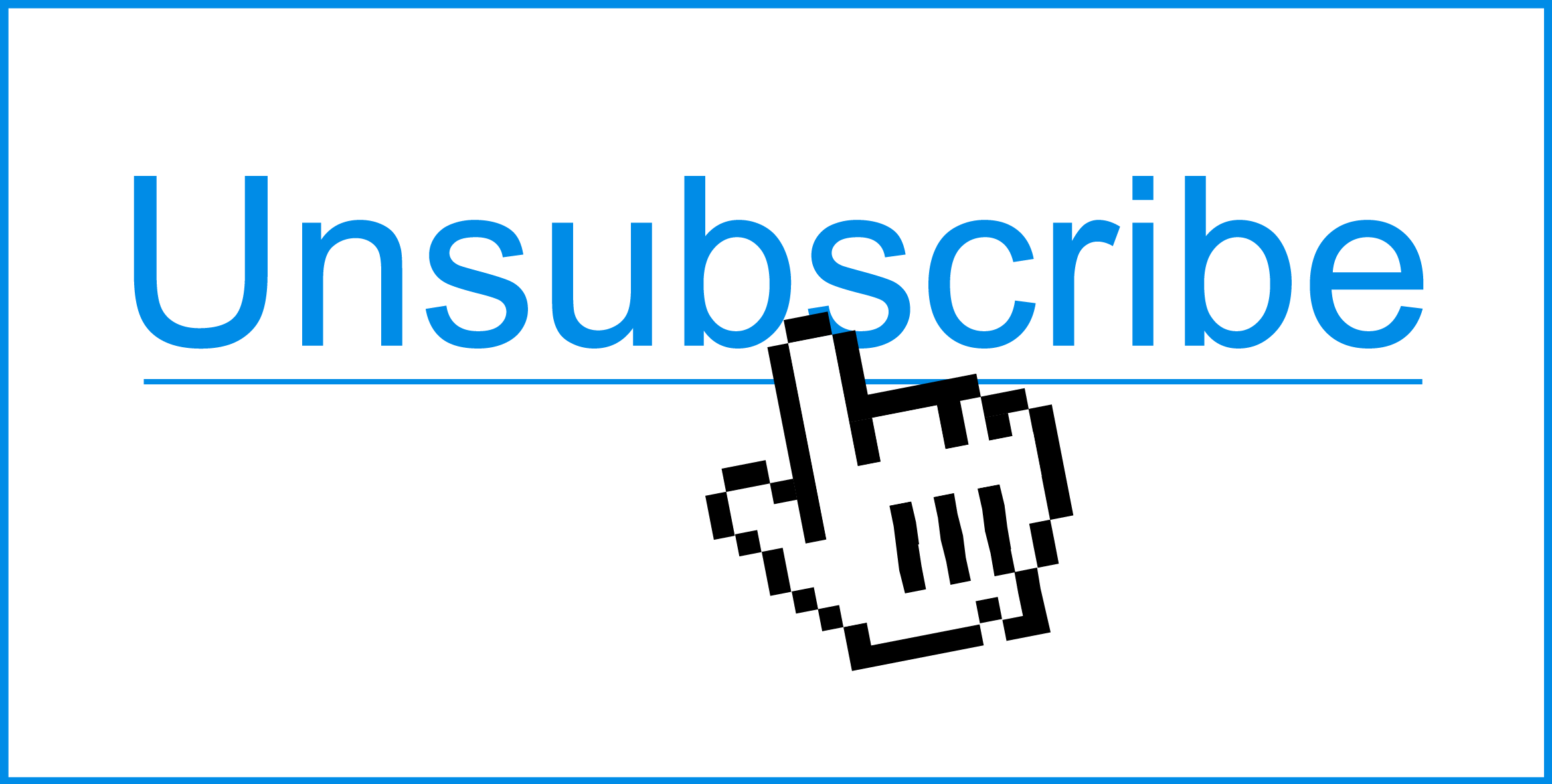
Give People the Option to Unsubscribe
When people receive an email they are not expecting, what do they do? They either mark it spam, delete or unsubscribe if there’s a respective link or button. The last option is best for you. It’s better to lose one person than lower your reputation with a high spam complaint rate. A short unsubscribe link in small print shows your professionalism, loyalty, and respect.
How to Elicit Emotions: Triggers and Power Words
In fact, all the mentioned above elements are strong recommendations for every cold email. Your email can go without your signature but it’s better to have one. Longreads work but worse than short emails. It’s not vital to schedule your email campaigns but they perform better.
Yet, there are three must-haves that will help you win the recipient’s trust and sway them to the dark side of the force. They are emotional triggers, power words, and trust-winning words and combinations.
Use Emotional Triggers
Emotional triggers are words that appeal to a person’s imagination and burn a definite feeling or emotion. We can conveniently divide emotional trigger words into a few groups:
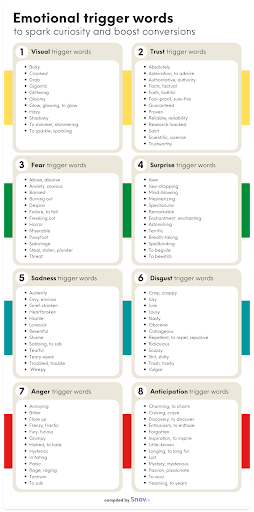
Use Power Words
Power words are the words that evoke a definite psychological response in a person. There are four main segments of power words used by professionals. They:
- Arouse curiosity. Any word that doesn’t line in with our understanding is exciting and burns a desire to see what is hidden behind it. Besides, in the subject lines, you may ask a question instead of an affirmative. Is it possible to find 2k leads on LI in one day? works better than Find 2k leads on LI in one day.
- Appeal to vanity. People love to be complimented, thus, they love words of vanity and admiration.
- Build trust. A bad word may ruin your email and lead it to spam. Besides simple adjectives and nouns, you may use credible sources: Instagram blogger with 100k followers shares How to write social posts.
- Evoke the fear of missing out. FOMO subject lines create the exact feeling of missing out. They push people to open an email, and later, convert. Still, be careful with such subject lines as they may look spammy in a way. And only use them when you know your audience from A to Z, otherwise, you’ll scare people off.

Avoid Trust-Ruining Words
When following up with someone or reaching out to someone for the first time, you not only need to use trust-winning words but also avoid a few that may destroy your credibility. A few bad examples are:
- “Just”: This word means that you’re diminishing your email’s significance. Are you sure you are?
- “Et cetera”, “so on and so forth”: These examples show that you don’t know what you are talking about, and they lower the significance of your words. Think of the most important points and put them down.
- “Hope you’re doing well”: This expression is Ok when you are reaching out to someone you are familiar with. In any other case, it sounds confusing.
- “I think”: Let’s be honest, no one cares what you think. People are bothered by what they think. Moreover, your whole email is your point of view, there’s no need to underline this. Additionally to that, people use this word combination for verbal self-defense. There’s no sense in protecting yourself from your readers.
- “Totally”: This expression and its alternatives are simple fillers. They add no extra significance and only bring in drama to your words.
- “With our product, you will save time”, “Our tool will help you boost sales”: Empty promises. How much time will the person save? How big will the boost be? Numbers speak louder than words, use them to prove your credibility.
- “Sorry”: If you’re sorry you’re bothering people, do not reach out to them at all. You can apologize when your dog has chewed your internet cable or a tornado has destroyed your house.
- “Obviously”: The idea you’re trying to push may be obvious to you but not to >your leads. Such assumptions may show that you’re not aware of the readers’.
Final Thoughts
I told you at the beginning of the article that composing cold emails is difficult. Yep, there are so many things you need to keep in mind! Still, the first step is the hardest. Right now, go and try to write your first cold email! You’ll see later that it’s not that complicated, and further emails will be floating.
Before sending your first email campaign:
- Check your IP sender’s reputation
- Set the technical records
- Analyze your audience, segment and personalize your email campaign
- Make sure you’ve added all the necessary parts in your emails
- Use power words and avoid spam triggers
- Be brief and be patient on the email formatting
- Double-check your email
May success, high conversions, low spam, and bounce rates follow you!
If you’re interested in learning more about email marketing, check out this helpful blog post.

Great article!